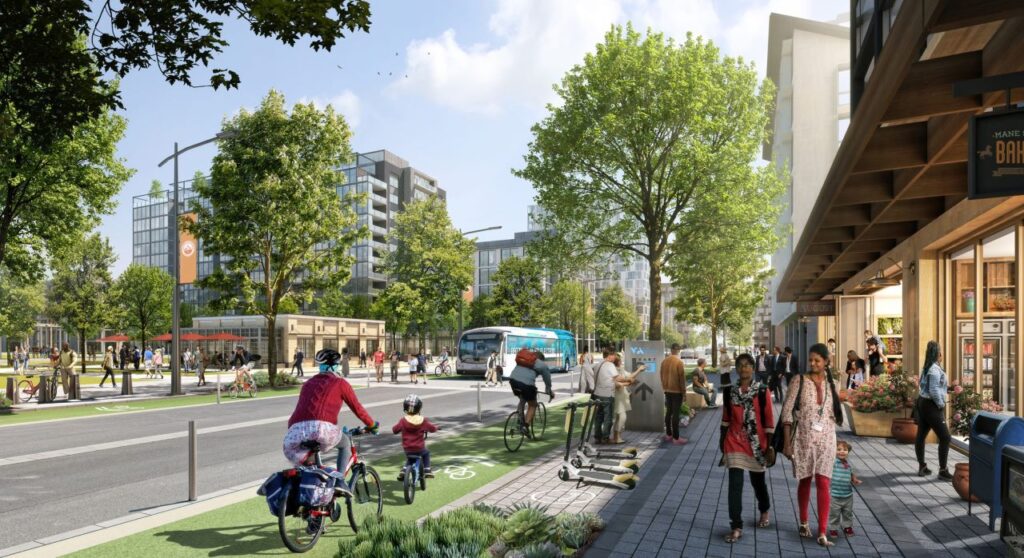Table of Contents
Introduction
Mumbai, the financial capital of India, and a city that is constantly growing and evolving is renowned for its bustling streets, high-rises, and extensive network of roads and metros. The city’s vibrant streets and bustling infrastructure are a testament to its steady progress, yet there is much more potential for growth and development. With its ever-growing population and rapid urbanization, it has become a challenge to cater to the needs of the city’s residents.

Many of the spaces under elevated roads and metro lines are often left neglected spaces and unused. These spaces serve as makeshift parking lots, dumping grounds for garbage, or a haven for criminal activities and anti-social elements. However, these spaces have the potential to be transformed into something more beautiful and functional. With thoughtful planning and development, these areas can become spaces that bring great benefits to the city and its residents. The possibilities are endless, and the potential to improve the city and the lives of its residents is tremendous.

The Need for Redesigning Neglected Spaces in Mumbai
Challenges of Urbanization and population growth
The population of Mumbai is estimated to be approximately 20.41 million people and is said to be the most populous city in India. The city has experienced rapid population growth in recent decades due to factors such as migration from rural areas, high birth rates, and urbanization. The city’s population density is one of the highest in the world, and the challenges of managing such a large population in a limited space have contributed to many of the urbanization challenges faced by Mumbai.Urbanization and population growth have also led to significant challenges related to open spaces in the city.
Shortage of public spaces in cities
The loss of open spaces has also had negative impacts on the environment, including increased pollution and reduced biodiversity.There is a need for more parks, open spaces, and recreational facilities to accommodate the exploding population.
The problem is twofold. Firstly, the city’s limited land mass makes it difficult to create new public spaces. Secondly, the existing open spaces are often illegally occupied by slums and commercial establishments, leaving residents with few options for leisure activities.
The lack of public spaces hurts the quality of life of Mumbai’s citizens. It limits the opportunities for people to engage in physical activities, reducing their overall physical health. Additionally, people are unable to socialize with their neighbors, leading to a sense of isolation.
The Potential of Redesigning Neglected Spaces in Mumbai
One of the most significant benefits of redesigning these spaces is the creation of more usable space. By reimagining the space under elevated roads and metros, we can create more areas for public use, such as parks, plazas, and markets. This can greatly improve the quality of life for residents, providing them with much-needed space to relax and enjoy the outdoors.
In addition to creating more usable space, redesigning these areas can also enhance the safety and security of pedestrians. Currently, these spaces are often dark, dingy, and unsafe, making them unappealing for people to use. However, by introducing proper lighting, surveillance cameras, and other safety measures, we can make these areas more secure and inviting for pedestrians.

Another important aspect of redesigning spaces under elevated roads and metros is improving the aesthetics of the area. Currently, these spaces are often unattractive and detract from the overall beauty of the city. By introducing greenery, public art, and other design elements, we can transform these spaces into beautiful and vibrant areas that add to the city’s charm and character.
Case Studies of Redesigned Spaces
- Underpass Park, Canada
Underpass Park is a redesigned public space located in Toronto, Canada, underneath a series of overpasses. The area of the park is 2.5 acres and it opened in 2012. The park was designed by the planning and landscape architecture firm, The Planning Partnership.
The park features a range of recreational activities, including a playground, basketball court, and skateboarding area. The design also incorporates public art installations and murals, adding to the park’s overall aesthetic appeal.

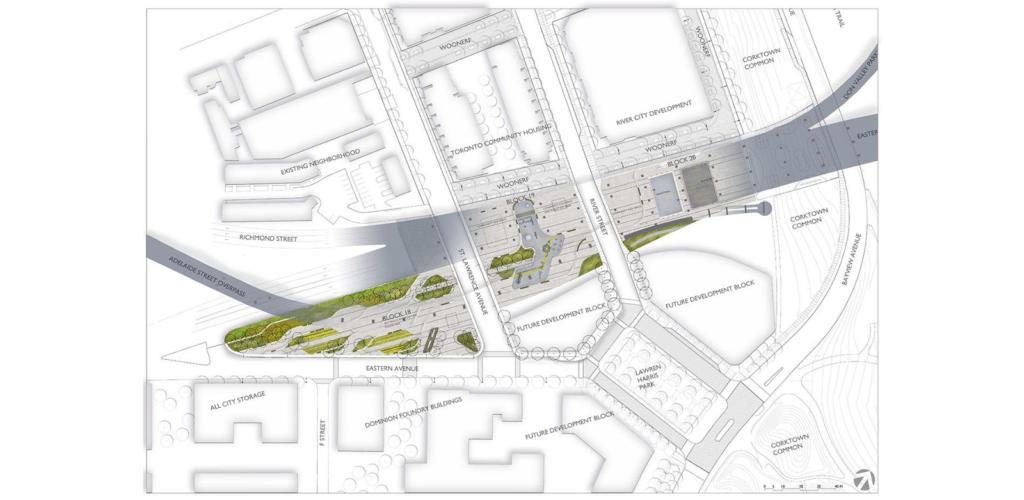
One of the most innovative design features of Underpass Park is the use of a rainwater collection and filtration system. The system captures rainwater runoff from the overpasses and uses it to irrigate the park’s green spaces, reducing the need for additional water sources.
Underpass Park has been successful in revitalizing an underutilized and neglected space, providing the local community with a safe and functional public space. The park has also had a positive impact on the surrounding neighborhood, leading to increased property values and the development of new businesses.
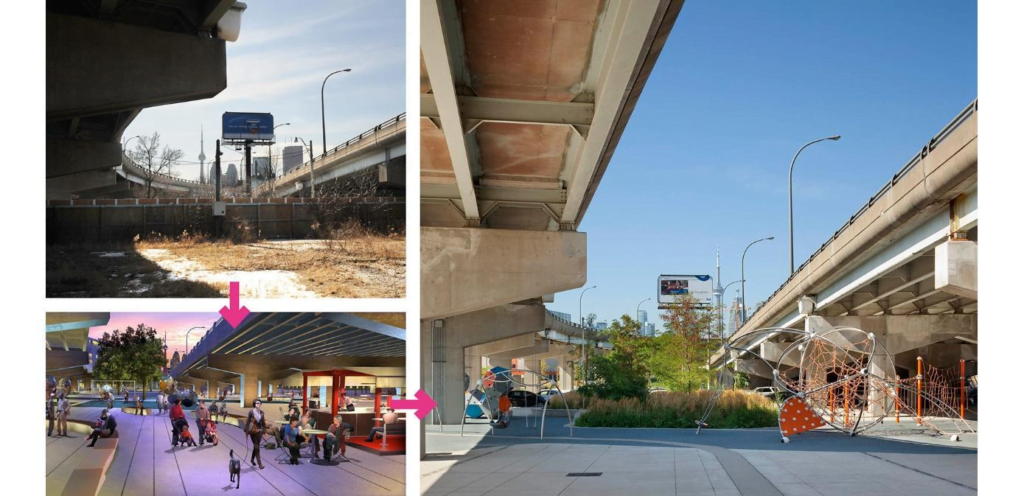




- Fly the flyover, Kowloon East, Hong Kong
The Kwun Tong Bypass project has an area of 8500 sqm and is a unique initiative to bring life back to a previously unused space in the heart of Hong Kong’s business district. Planned in three phases, the project will create a vibrant public space in the area and will be a platform for diverse public activities. As part of the project, the columns along the bypass are decorated with colorful murals that tell the story of the local urban landscape. This innovative idea has already been well received by the local community and is sure to be a wonderful source of pride and joy.
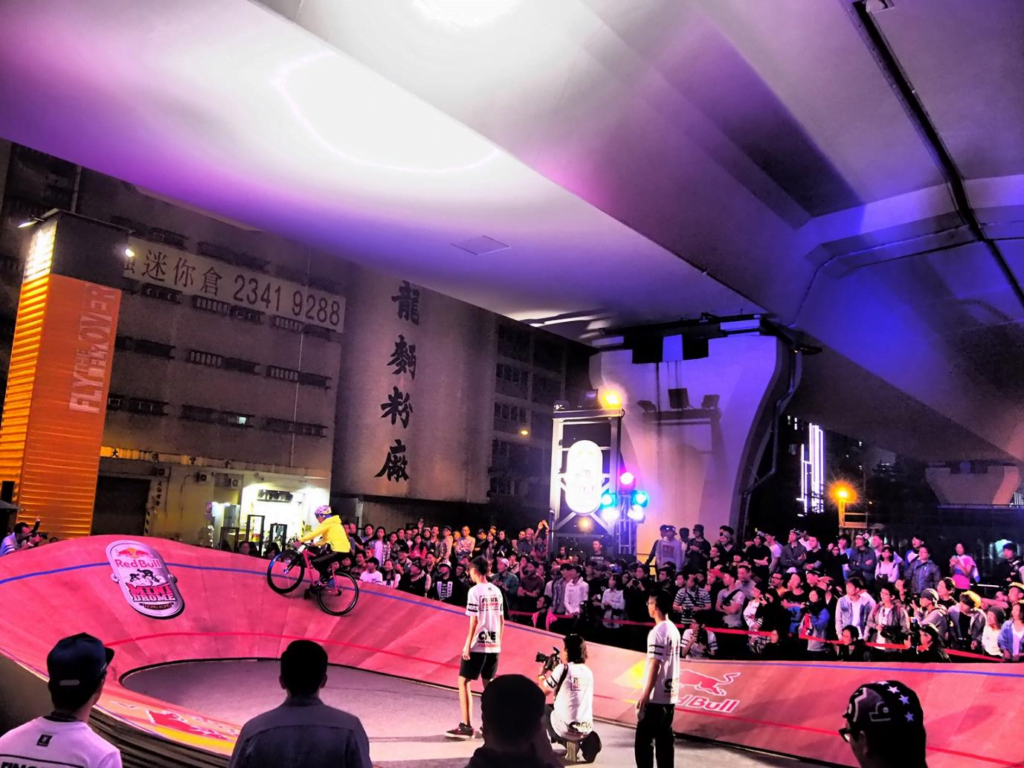
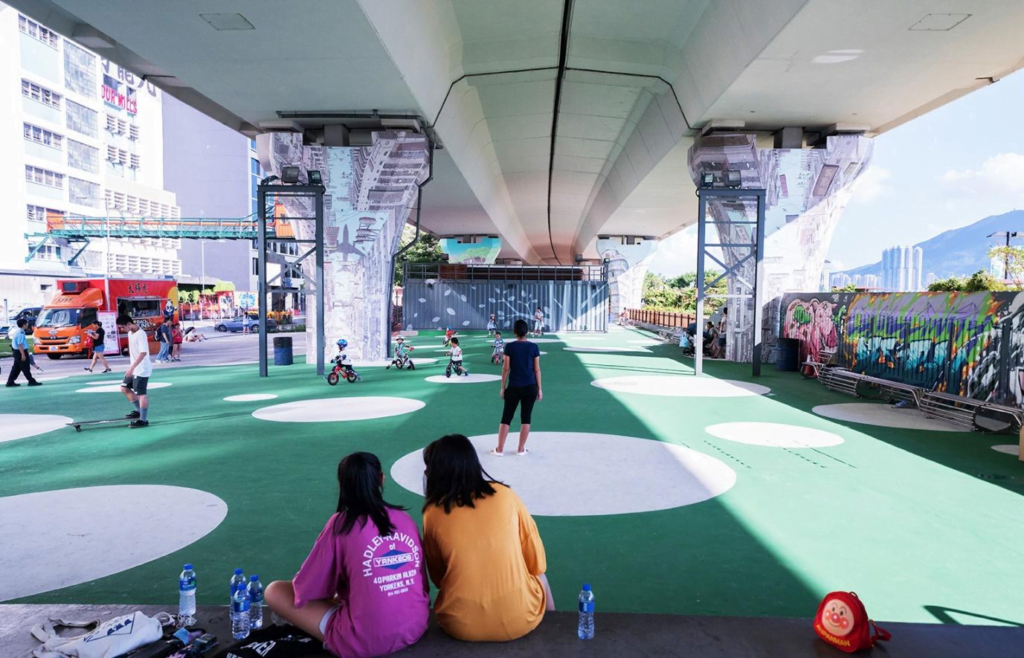

The Kwun Tong Bypass project is an example of how creative ideas can be used to revitalize urban spaces. Utilizing recycled materials such as freight containers, this space offers a range of activities for visitors to engage in, from sensory play equipment to skillful entertainment. What’s more, this spot offers spectacular views across the river and the city skyline, providing users with a one-of-a-kind experience that is unparalleled in the region.
- Under the Flyover, Bangalore
‘The Ugly Indians’ is an anonymous group of concerned locals who have identified the potential in dirty spots in public spaces and have taken it upon themselves to show the world what their community can do to make better living places. By taking the initiative and focusing on a common goal, to reclaim and revitalize the derelict and abused urban spaces beneath the multiple flyovers of the Garden City. This seemingly simple intervention was surprisingly effective in bringing the community together. From onlookers to advertisers, all contributed to the effort by refraining from defacing the artwork.



The design has the power to change the way we view our communities and cities. Through the thoughtful and meticulous process of design, people have been able to establish a sense of belonging and responsibility to the environment around them. This shift in perspective has had a tremendous influence on how people think and behave in their localities. It has allowed them to become more aware of their surroundings and take action toward making positive changes.
Design Elements for Redesigning Spaces Under Elevated Roads and Metros
The redesigning of spaces under elevated roads and metros in Mumbai requires careful planning and innovative design. Here are some design elements that can be considered while redesigning these spaces:
- Functional Layout: The layout of the space should be designed in a way that maximizes its usability and functionality. The space should be organized in a manner that caters to the needs of the community, whether it is for recreation, socializing, or other activities.
- Greenery: Incorporating greenery in the form of trees, plants, and other vegetation can provide numerous benefits. It can help reduce air pollution and noise levels, provide shade, and create a more relaxing and inviting atmosphere.
- Lighting: Proper lighting can transform a dark and dingy space into an inviting and safe one. It can help increase visibility, reduce crime, and improve the aesthetics of the area.
- Art Installations: Public art installations can add a unique and creative element to the space, making it more visually appealing and interesting. These installations can range from sculptures, murals, and other art forms that add to the character of the space.
- Water Features: Incorporating water features such as fountains, ponds, and other water bodies can create a soothing and relaxing atmosphere. They can also attract wildlife and add to the aesthetic appeal of the area.
- Seating and Shelters: Providing comfortable seating areas and shelters can encourage people to use the space and provide them with much-needed relaxation from the hustle and bustle of the city.
Conclusion
In conclusion, redesigning spaces under elevated roads and metros can have a positive economic impact on the city. By creating more public spaces and enhancing the aesthetics of the area, we can attract more visitors and stimulate local businesses. This, in turn, can create more job opportunities and boost the local economy.
In addition, redesigning spaces under elevated roads and metros in Mumbai has the potential to greatly benefit the city and its residents. By creating more usable space, enhancing safety and security, improving aesthetics, and stimulating the local economy, we can transform these neglected areas into vibrant and functional spaces that add to the beauty and character of Mumbai. With careful planning and innovative design, we can create a better, more livable city for all.



